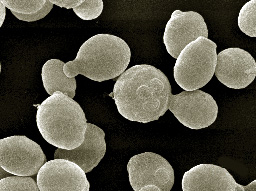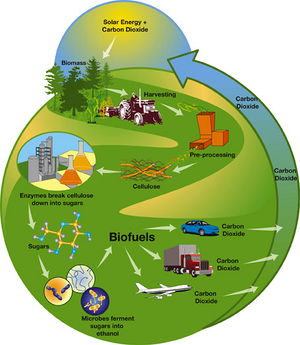Pichia stipitis: Difference between revisions
| Line 57: | Line 57: | ||
[7] [Joint Genome Institute. (2011). Pichia Stipitis v2.0. Retrieved Apr 2011, from JGI: http://genome.jgi-psf.org/Picst3/Picst3.home.html] | [7] [Joint Genome Institute. (2011). Pichia Stipitis v2.0. Retrieved Apr 2011, from JGI: http://genome.jgi-psf.org/Picst3/Picst3.home.html] | ||
[8] Blackwell, Meredith, Cletus P. Kurtzman, Marc-André Lachance, and Sung-Oui Suh. 2009. Saccharomycotina. Saccharomycetales. Version 22 January 2009. http://tolweb.org/Saccharomycetales/29043/2009.01.22 in The Tree of Life Web Project, http://tolweb.org/ | [8] Blackwell, Meredith, Cletus P. Kurtzman, Marc-André Lachance, and Sung-Oui Suh. 2009. Saccharomycotina. Saccharomycetales. Version 22 January 2009. http://tolweb.org/Saccharomycetales/29043/2009.01.22 in The Tree of Life Web Project, http://tolweb.org/] | ||
==Author== | ==Author== | ||
Revision as of 17:24, 24 April 2011
Classification

Eukarya; Fungi/Metazoa; Fungi; Dikarya; Ascomycota; Saccharomycotina; Saccharomycetes; Saccharomycetales; Debaryomycetaceae; Scheffersomyces
Species
Scheffersomyces Stipitis
Description and Significance
The fungus p. Stipitis is a yeast from the xylose fermenting clade of the Schefferomyces genus. As with most members of the Saccharomycetales order a single p. Stipitis individual has a size of 3 to 5 µm in diameter. Budding from asexual reproduction may cause deviation from the usual spherical or ellipsoidal shape of an individual. Under study it has been noted p. Stipitis exhibits a cream-colored, smooth-shaped colony [5]. A suitable habitat for p. Stipitis includes damp or wet areas rich in organic biomass [8]. Hardwood forests or areas high in agricultural waste are common environments. Temperatures at which growth occurs are 25°C to 37°C with budding most commonly occurring at 25°C. It has been noted growth ceases at temperatures around 40°C to 45°C [5].
The significance of p. Stipitis to industrial-related purposes comes from the ability to ferment the sugar, xylose [4]. Degrading biomass to ethanol at high yields in respect to other ethanol-producing microorganisms has made p. Stipitis an important constituent of the alternative fuel and bioenergy industries [7].
Describe the appearance, habitat, etc. of the organism, and why you think it is important.
Genome Structure
Describe the size and content of the genome. How many chromosomes? Circular or linear? Other interesting features? What is known about its sequence?
The genome P. stipits is composed of eight linear chromosomes. The total genome is comprised of 15.4 Mbp with chromosomes ranging in size from 3.5 to 0.97 Mbp [Jeffries]. Studies have shown that P. stipitis is haploid, because when compared to similar yeasts, who have determined to be haploid, they share a high frequency of recessive mutations [Melake].
Analysis of the genome sequence have revealed many sequences that code for putative xylose transporters similar to those found in related yeasts, D. hanseii and C. intermedia. In addition to containing genes required for the glycolysis, the tricarboxylic cycle, and the oxidative pentose phosphate pathway, it contains genes for xylose assimilation and ethanol production [jeffries]. Genome sequencing and analysis have led to many possible insights into the metabolism of P. stipits as indicated by the following assertion from T. W. Jeffries et. al., "The presence of numerous genes for endoglucanases and Beta-glucosidases, along with xylanase, mannanase, and chitinase activities indicate that it could metabolize polysaccharides in the beetle gut" [jeffries]. The ability of P. stipitis metabolize the polysaccharides found in the beetle gut is not that surprising since the strain was originally isolated from insect larvae belonging to passalid beetles [Suh]. However, the yeast has the highest known capacity to ferment xylose to ethanol [van Dijken], an abundant sugar in the polysaccharides that compose hardwood and other plant material [Jeffries 1]. This aspect of the yeast's metabolism and other reported pathways, such as the fermentation of cellobiose to ethanol [Parekh], have lead to interest in the possiblity of using P. stipitis to produce ethanol for use as a biofuel.
Cell Structure, Metabolism and Life Cycle
Interesting features of cell structure; how it gains energy; what important molecules it produces.
Ecology and Pathogenesis

The fermentation capabilities of p. Stipitis are stimulated in environments where oxygen becomes a limitation [7]. Aside from typical forest or agricultural habitats p. Stipitis also forms an endosymbiotic relationship with passalid beetles [6]. In the case of a study by Blackwell and Nguyen (unpublished) 400 of the 400 tested passalid beetles were found to contain the microorganism in their guts' [8]. The oxygen-limited digestive tract and hindgut environment of the wood-ingesting beetle permit the degradation of xylose by p. Stipitis [4].
It has also been determined p. Stipitis can be utilized to ferment glucose from manufactured lumber products. Construction waste in landfills rich in glucose content may contribute to the bioenergy feedstock. Ethanol yield efficiencies can be as high as 84.7 to 90.7% per unit substrate consumption [6]. Due to the fermentative ability there is potential to utilize food and municipal wastes as well as agricultural and forest residues to significantly contribute to ethanol feedstocks [6].
Habitat; symbiosis; biogeochemical significance; contributions to environment.
If relevant, how does this organism cause disease? Human, animal, plant hosts? Virulence factors, as well as patient symptoms.
References
[1] [National Center for Biotechnology Information. (2011). Taxonomy Browser. Retrieved Apr 2011, from NBCI: http://www.ncbi.nlm.nih.gov/Taxonomy/Browser/wwwtax.cgi?id=4924]
[2] [Haeng Cho, D. et al. (2010). "Ethanol production from acid hydrolysates based on the construction and demolition wood waste using Pichia stipitis." Bioresource Technology. Volume 102. p. 4439-4443.]
[3] [NBCI. (2011, Jan). Taxonomy Browser. Retrieved feb 2011, from NBCI: www.fdinodsin.com]
[4] [Suh, S., et al. (2004). "The beetle gut : a hyperdiverse source of novel yeasts". The British Mycological Society. Volume 109. p. 261-265.]
[5] [International Mycological Association. (2011). Yeast Species Database. Retrieved Apr 2011, from MycoBank: http://www.mycobank.org/yeast/BioloMICS.aspx?Link=T&DB=0&Table=0&Descr=Pichia%20stipitis&Fields=All&ExactMatch=T]
[6] [Suh, C., Marshall J., McHugh, J. V., Blackwell, M. (2003). "Wood ingestion by passalid beetles in the presence of xylose-fermenting gut yeasts". Molecular Ecology. Volume 12. p. 3137-3145. http://si-pddr.si.edu/jspui/bitstream/10088/6710/1/Suh_Marshall_McHugh_and_Blackwell.pdf]
[7] [Joint Genome Institute. (2011). Pichia Stipitis v2.0. Retrieved Apr 2011, from JGI: http://genome.jgi-psf.org/Picst3/Picst3.home.html]
[8] Blackwell, Meredith, Cletus P. Kurtzman, Marc-André Lachance, and Sung-Oui Suh. 2009. Saccharomycotina. Saccharomycetales. Version 22 January 2009. http://tolweb.org/Saccharomycetales/29043/2009.01.22 in The Tree of Life Web Project, http://tolweb.org/]
Author
Page authored by Josh Wolter and John Wright, students of Prof. Jay Lennon at Michigan State University.
<-- Do not remove this line-->Genus Scheffersomyces
